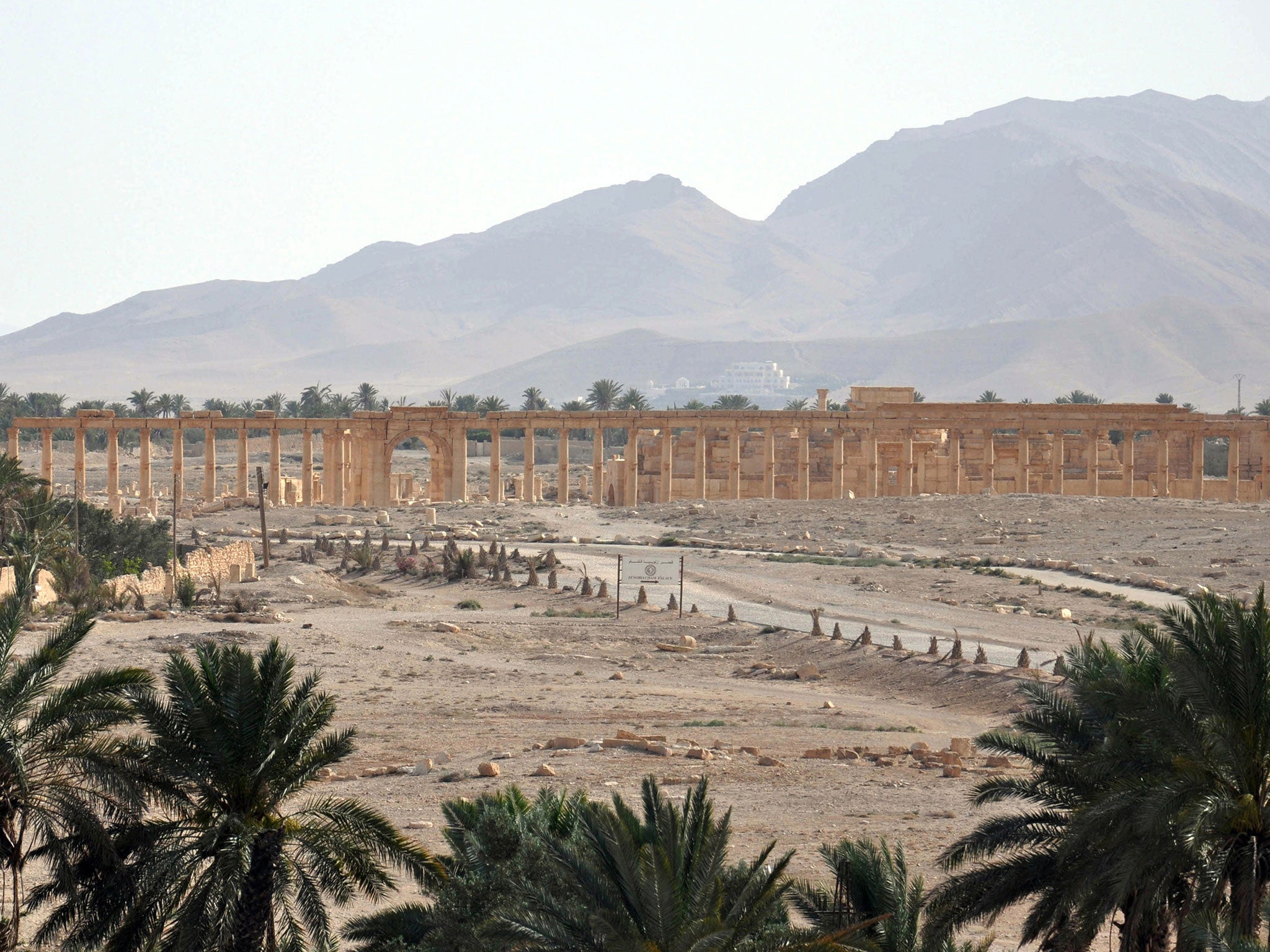Palmyra: Isis destroys Roman triumphal arch in ancient Syrian city
In August, three 2,000-year-old Syrian tower tombs, built between 44 and 103 AD, were destroyed

Your support helps us to tell the story
From reproductive rights to climate change to Big Tech, The Independent is on the ground when the story is developing. Whether it's investigating the financials of Elon Musk's pro-Trump PAC or producing our latest documentary, 'The A Word', which shines a light on the American women fighting for reproductive rights, we know how important it is to parse out the facts from the messaging.
At such a critical moment in US history, we need reporters on the ground. Your donation allows us to keep sending journalists to speak to both sides of the story.
The Independent is trusted by Americans across the entire political spectrum. And unlike many other quality news outlets, we choose not to lock Americans out of our reporting and analysis with paywalls. We believe quality journalism should be available to everyone, paid for by those who can afford it.
Your support makes all the difference.A 2,000-year-old Roman arch of triumph in the ancient city of Palmyra in Syria has been blown up by Isis militants, the country’s antiquities chief has said.
Maamoun Abdulkarim told Reuters that local sources had confirmed that the arch had been virtually destroyed.
Khaled Al Homsi, an archaeologist and human rights activist from Palmyra, tweeted a photograph of the monument before it was blown up, indicating that the main central arch and two supporting ones on either side were now gone.
“#SavePalmyra #Isis blows up the #Triumphal Arch at entrance to colonnade today,” he wrote.
The historian and writer Tom Holland retweeted Mr Al Homsi’s message, saying: “Oh no … Palmyra.”
Isis militants, who consider some of the historic ruins to be sacrilegious, has blown up temples and destroyed other structures at the Unesco World Heritage site since taking the area from Syrian government forces in May.
In August, three 2,000-year-old Syrian tower tombs, built between 44 and 103 AD, were destroyed. The Temple of Bel, an iconic religious building that had survived for 2,000 years, has also been blown up.
Khaled al-Asaad, the archaeological director of a museum detailing Palmyra’s antiquities, was beheaded and his body tied to a pole after he refused to co-operate with Isis.
Join our commenting forum
Join thought-provoking conversations, follow other Independent readers and see their replies
Comments